October 3o, 2020
As the corona virus begins to spread more rapidly, the stock market is fretting about the possible re-imposition of a nationwide quarantine like what France and Germany just did. That would be a disastrous policy choice. A second quarantine would cause the stock market to swoon, trigger a second recession within a year, and exacerbate the pain on those who can least afford it – low income wage earners, blacks, women, and Latinos. The economic cost would be devastating. There are other available options to slow the spread of the virus until help arrives in the form of a vaccine which is, presumably, only two months away.
We believe that a quarantine was warranted in March. China had considerable success with a quarantine and it was widely believed to be the correct policy prescription. The Europeans were trying to emulate the success of the Chinese. The American public was begging our leaders to adopt a similar tactic. The lack of forceful action by policy makers in late February triggered a precipitous 32% drop in the stock market. Any further delay could well have pushed the economy to the brink of a 1930’s type depression. Like it or not, policy makers were forced to respond. So, in mid-March, Trump and most state governors imposed a two-month lockdown. It was the right (and perhaps only) viable option at the time. But it had disastrous consequences.
It caused the biggest single-quarter drop in GDP in our history. Twenty-two million people lost their jobs. And while implemented with the best of intentions, the recession hit hardest the segment of society that could least afford it – low income workers, blacks, women, Latinos. These people worked in restaurants, bars, hotels, and retail stores which were forced to close. Worst of all, the quarantine did not stop the spread of the virus for long.
We believe that policy makers knew a quarantine would push the economy into a deep recession, which is why they passed the largest fiscal stimulus bill in our history. The idea was to restore income for people who lost their jobs, and buy nine months of time until a virus became available.
So now the virus is once again beginning to spread more rapidly. The press always cites the number of new cases which has clearly picked up. But cases can rise simply because we are testing people more extensively. The more people we test, the more positive cases we will find.
In our view, we should be focusing on the percent of those new positive cases that are positive. That number has edged up from 4.5% in early October to 6.2%, which suggests that the pickup, thus far, is relatively modest.
At the same time, the number of daily deaths has been quite steady. Our doctors and nurses have found ways to prevent seriously ill COVID-19 patients from dying by using various therapies like Remdesivir and Hydroxychloroquine.
What should we do now to slow the spread of the virus?
A nationwide quarantine may have been warranted in March, but it is not the right policy prescription now. The economic situation is completely different. The stock market in March had fallen 32%. Today it is within 5% of a record high level.
In March, the economy was on its way to a 31% GDP drop in the second quarter. But GDP growth rebounded by 33% in the third quarter.
The combination of the recession and the stimulus package boosted the fiscal 2020 budget deficit from an expected $1.0 trillion to a record-breaking $3.1 trillion. A second quarantine would undoubtedly require additional government spending and further widen the projected deficits.
A quarantine was the right policy prescription in March. We thought it could work. And we needed to buy nine months of time until a vaccine became available. But now yearend is only two months away.
A better solution today would be to renew our effort to protect those most vulnerable. Eighty percent of the corona virus deaths are amongst people over the age of 65. Develop contingency plans for hospitals in corona virus hot spots to ensure that hospital facilities are not overrun. Transfer non-corona virus patients to other hospitals so that COVID-19 patients can be isolated in one place. Ensure that an early vaccine does not get bogged down in unnecessary bureaucratic red tape. Finally, have federal, state, and local officials set a good example — wear masks, practice social distancing, and eliminate large public gatherings. We can curtail the rapid spread of the virus for the next two months without inflicting undue damage on the economy. Help in the form of a vaccine is imminent. Once that occurs a sustainable expansion will be in place.
Stephen Slifer
NumberNomics
Charleston, S.C.

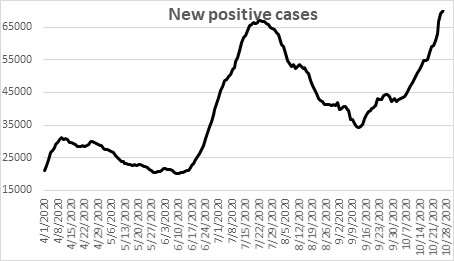
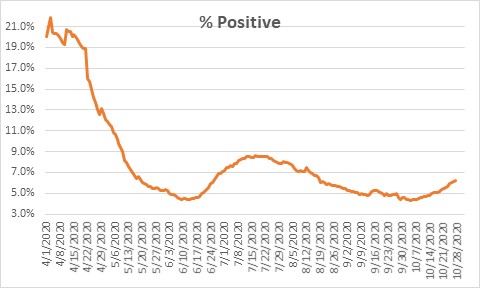
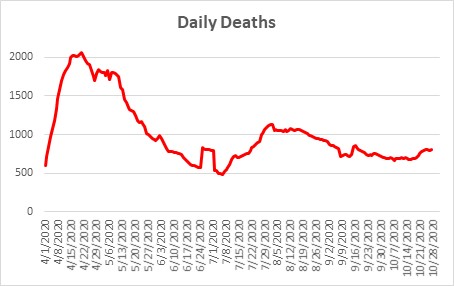
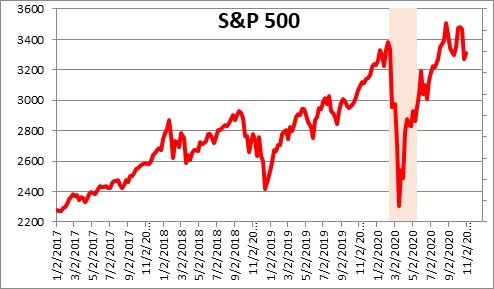

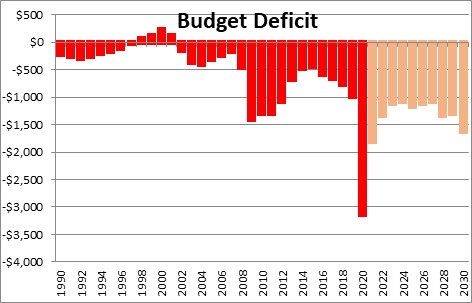
Steve,
I understand your economic concerns but I think you misunderstand the depth of the social and health problems. While not a doctor, the scientists and doctors who seem to be the experts in this area are advising us to expect the pandemic to be “over” sometime around this time next year or even after. Getting to a working initial vaccine is only the first step. The uptake will take some time. In the meantime, people will be getting ill, some developing long term complications requiring care and some dying. The Spanish flu caused long term cardiac and other problems among the “survivors”. Dying is only one of the possible negative outcomes of COVID. It’s a serious disease that deserves serious consideration and planning. What is needed is leadership that works with business, science and other stakeholders developing a nuanced plan that adjusts to changing reality. Parts of your plan make good sense, but other parts quite honestly are out of your and my league. When to release the vaccine *should not* be decided by business people. What little I know about vaccines, includes that they can “misfire” and actually cause worse problems and more deaths among the recipients. It’s immoral to rush the vaccine beyond the bounds of medical safety and risk more people than we save. COVID is going to be with us for a while yet, we need to develop fact and science based plans that reflect this reality and come up with the best possible outcomes for the greatest number. We all want to see 2020 in the rear view mirror, we can’t let that blind us to the reality that COVID will still be in the passenger seat with us at least through 2021. We should plan for that. It’s the superior economic, and moral approach.
Best,
Chris
Thank you for your work and insights,
Steve:
I completely agree and the World Health Organization now agrees as well. The WHO does not advocate lockdowns as the primary means to control the virus, noting that continued lockdowns would in fact double world poverty and child malnutrition by next year. As you noted, we cannot have a one size fits all answer to this pandemic. If you are in a high risk group, elderly and multiple chronic health conditions, you must quarantine and take every possible precaution. Most in this group are 65+ years and retired so extended quarantining is viable. If you are younger than 65 and healthy, you have almost a zero chance of dying from this virus, therefore it’s time to get back to normal with work, school, and life. We must get back to “normal”, the long term negative health impacts of a self-inflicted dysfunctional economy will far outweigh those of the actual virus.
George
Hello Steve,
I very much enjoy your Blog and appreciate your wisdom and guidance.
I follow the Percent of positive Tests, 7-day average closely and noticed that today’s Post and Courier pegged the number at 12.6 percent compared to your much lower number of 6.2%.
What am I missing? I would love to be mistaken.
Best regards,
Everett
Good morning Everett,
I just checked the P&C article and I see the number you cited. Those cases were for S.C. versus my numbers which are for the U.S. I cannot send it to you through these pages but I will send you an e-mail with the data I am using.
Best.
Steve
Thanks for sharing George.
Chris,
I think you and I are talking about different things. You are talking about the virus and how long it might be around, possible long-term side effects, whether the vaccine will be accepted, and who should be making the decisions about the path forward. Fair enough. I don’t have any expertise in that area. But to be honest, even the medical profession has widely differing opinions about this so I am not exactly sure who should be calling the shots.
But what I am talking about is the economic impact of the virus on the economy. And from that viewpoint I believe firmly that a nationwide quarantine would be a disaster. Further, everywhere I look in the recent data I do not see Americans running scared. Home sales are the highest they have been since 2006. Retail Sales are at a record high pace. Employers are hiring 1 million workers per month. The unemployment rate has fallen faster than even the optimists (which include me) had expected. And all of that is true through the middle of October. I do not see us cowering as new cases of the virus are being reported. Instead, I see consumers and employers wanting to get life back to normal. For those reasons I have been, and remain, optimistic about the pace of economic activity going forward into next year.
Steve
Steve,
I think my concern is that you are painting an overly optimistic view of the medical side of things. Hydroxychloroquine doesn’t work against COVID and Remdesivir only works in the first few days of the infection, which is a real problem if it takes days to get test results back. There’s much less diversity of opinion among infectious disease specialists and epidemiologists than you might think depending on your news source.
It’s possible some sort of mass isolation *could* be warranted. Hopefully not, however my point is it’s a decision that’s ideally made with facts, science and the various stakeholders working together. The stock market has done well, and the job market has proved amazingly flexible and resilient, some sectors prospering and some withering.
However we are moving into winter and as predicted the cases are going up. I agree with your ideas about protecting those who are most vulnerable. However there are a lot of people in that category, more than just age groups and nursing homes. It will take a lot longer than two months to be “safe”. With the idea that it’s not going to be over in two months on the table, perhaps a quarantine, with multiple actions, health inspections at the boarder. temperature checks, mask wearing, longer term isolation of at risk individuals is the best economic option? The problem is we don’t know because we’re being told “we’ve rounded the corner” which is a lie.
https://www.washingtonpost.com/health/2020/11/02/deborah-birx-covid-trump/
You’re a brilliant economists Steve and I very much value your insights, You predicted the economy brilliantly, however your historical record on COVID predictions is not as good.
I apologize for being so blunt in my statements. however your statements on health are not backed up by the scientific consensus and could support dangerous health and sub-optimal economic choices.
Apologetically,
Chris